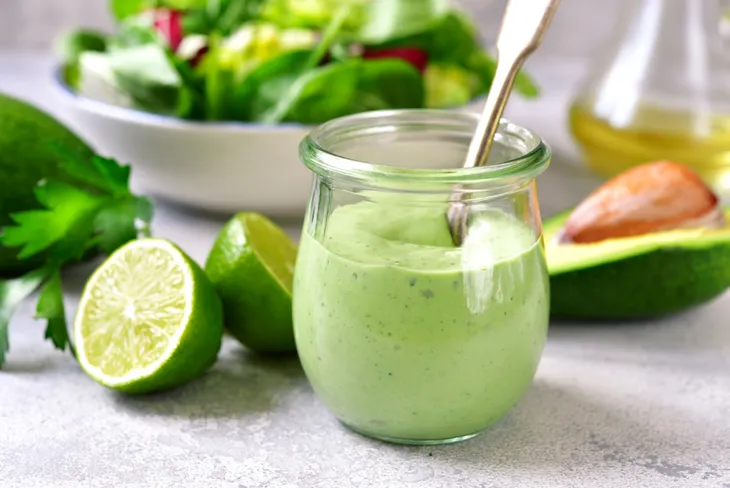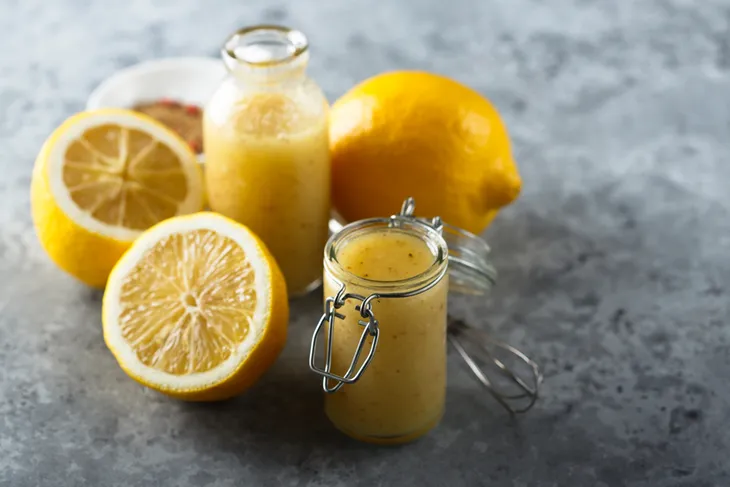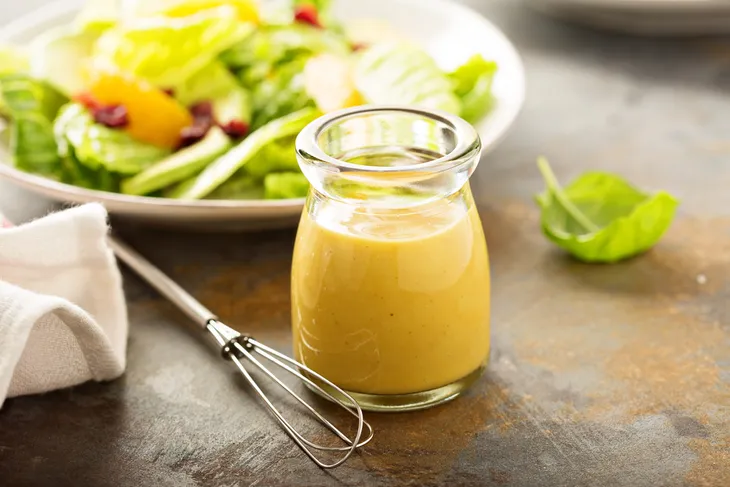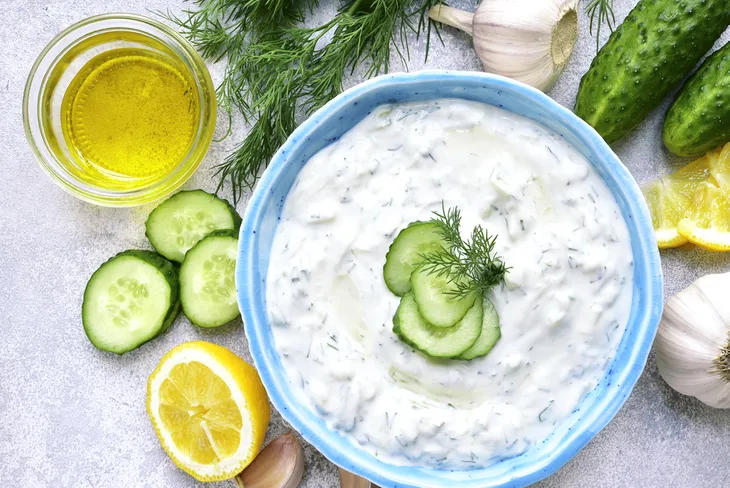Salad dressings are not all created equally when it comes to health. In fact, many of the store-bought varieties contain excess sugars, calories, and a heap of trans fats. The good news is that you can reclaim control of your salad bowl by making your own healthy salad dressings at home.
Here are eight salad toppers full of nutritious ingredients and heart-healthy fats…
Fruit Purées
Salad dressing is really just a flavor booster for your salad. So if you’re looking for a touch of sweetness to go with your mixed greens add some puréed fruit. Try blending a handful of sweet strawberries, mango, figs, or tart raspberries for their natural sweetness and amazing antioxidant-prowess.
Olive Oil and Balsamic Vinegar
When I’m looking for a tried and true, heart-healthy salad dressing, classic oil and vinegar always does the trick. However, I can’t rely on just any bottled oil or vinegar. I turn to a tablespoon of smooth extra virgin olive oil mixed with a few teaspoons of tangy balsamic vinegar. It’s simple, but oh-so delicious!
Avocado
Not only do sliced or mashed avocados make the silkiest, smoothest salad topper—they’re also packed with heart-healthy monounsaturated fats, which keep you satiated longer, aid digestion, and keep blood sugar from spiking so you’re blood sugar stays stable and you don’t suffer a snack attack soon after eating.
Tangy Citrus
Oftentimes it’s the simplest things in life that give us the most pleasure. That’s how I feel every time I squeeze a fresh orange or tangerine over my spring salad mix. Not only do they offer a natural sweetness, citrus is high in potassium and vitamin C to help strengthen immunity.
Flavored Oils
If the same old olive or sesame oil just won’t do—try drizzling a few teaspoons of fancy flavored oil over that chilled asparagus salad. Most bottled versions are olive oil mixed with fresh lime, herbs (i.e., sage), garlic, sun dried tomatoes, or figs, but can easily make a bottle of your own by bottling extra virgin olive oil with your favorite fruit, vegetable, or fruit essence.
Honey Mustard
Now by honey mustard I’m not talking about buying an actual bottle of the premixed condiment. I’m referring to mixing a teaspoon of my favorite mustard (i.e., I like to use grainy mustard rather than yellow mustard, but you choose) and mixing it with a touch of real honey. I even mix my mustard with a touch of real maple syrup once in a while for a sticky treat.
Fresh Salsa
If you can make your own garden fresh salsa, you might be surprised to hear that it goes with more than tortilla chips. Try adding a gracious dollop on top of chicken or fish and mixed greens. Suddenly you’ll be whisked away to spicier climates…it’s akin to eating a taco without the shell.
Greek Yogurt
I like to use plain Greek yogurt in everything—on my oats, in place of sour cream, in my baking. Why? Because this way I skip the extra fat, sugar, and calories found in most creamy salad dressings, but still get the creamy flavor plus the added protein, calcium, potassium, vitamins B6 and B12, zinc, and beneficial probiotic cultures found in this thick, natural yogurt. I mix mine with fresh garlic, lemon, and dill or chives for added flavor.











